The Graphic: Specia l Ed it ion Fa l l 2022
CLIMATE CHANGE 101
introduction to the changing climate

CLOSE TO HOME climate change disproportionately affects populations in Malibu and neighboring areas
FORGED BY FIRE extreme weather events threaten Malibu
A WASTE consumers develop a closed-loop food system
CONTENTS 08
16
22 WHAT
06
an

CONTENTS 33 ECO-NEWS how newsrooms can be climate-concious in its coverage and operations 38 RESOURCES additional materials for education and action 28 ‘NO PERFECT SOLUTION’ Malibu fights coastal erosion 34 THE TIP OF THE SINKING ICEBERG the climate crisis impacts mental health among youth
LETTER from the editor

There should not have been a historic blizzard the weekend of my 16th birthday.
Blizzards are common during win ter in my small corner of western Kan sas — but never at the end of April.
As cows wandered the highway due to high drifts against fences, the snow melted away into the next 80-degree weekend. I then had a stark revelation: this was climate change.
Since the changing weather pat tern startled my hometown in 2017, millions of people have suffered var ious life outcomes that can be traced back to a changing climate.
After observing misinformation in the media and society surrounding climate change, I knew it was nec essary to communicate responsibly and effectively about climate change to our audience — paving a beautiful intersection between my Journalism major and Sustainability minor.
Regardless of one’s stance or un derstanding of climate change, this edition seeks to inform readers about the contributions to and conse quences of climate change affecting the Pepperdine and Malibu commu nities.
Climate change is highly polarized, and many white evangelical Protes tants do not think it is anthropogenic, or human-caused. However, refusing to cover or read about climate change only leads to more damage.
Climate change is not going away.
Not all news coverage about cli mate change is doom and gloom. The more people educate themselves on these issues, the better they can adapt and incite change.
Since trust in the U.S. media is at a near-low, it is important to be trans parent about coverage.
Additionally, key members of Pep perdine’s administration would not sit down and have real-time inter views — a cornerstone to PGM’s in terviewing policy — with the writing staff. Rather than sacrifice the integ rity of these stories by including per fectly curated statements, there are transparency elements throughout the magazine describing why certain voices are missing.
Also, I would like to acknowledge the majority of the expert voices in this edition are from white individu als. This is a reflection of the environ
mental community and academia, which struggles to include voices outside of the white sphere. I want this edition to raise awareness about the issues themselves while acknowl edging this sector of study is not as di verse as the people it affects.
Thank you to my family and ad visers for listening to my rants about climate change and supporting me through this edition. The culmination of my studies would not be possible in a single and digestible magazine if it were not for their support and guid ance.
To my writers, thank you for dig ging through mountains of research, interviewing sources outside of the Pepperdine sphere and for pushing through the adversity to complete these necessary stories.
To my staff, thank you for reading every word, being diligent with edits and stepping into new roles to appro priately represent this topic.
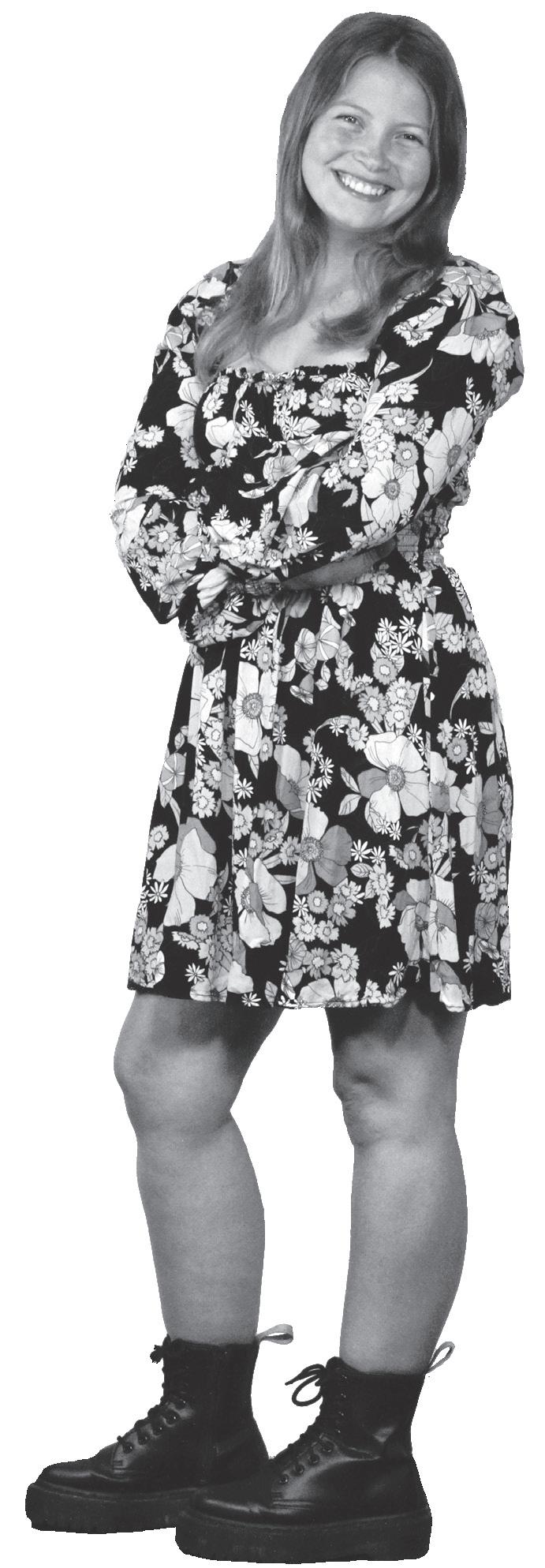
The articles within this special edi tion discuss physical phenomena, like food waste, coastal erosion and extreme weather events, while also delving into stories from people who are environmentally vulnerable and who experience climate anxiety.
These certainly are not the only ways in which climate change im pacts the community. This edition, however, can serve as a starting point to create more discussion, awareness and news literacy surrounding this topic.
The purpose of this edition is not to convince readers that climate change is occurring; it is here to lay out real, impactful events that are happening and will continue to happen if action is not taken.
This is climate change.
ALI LEVENS editor-in-chief & lead designer
STAFF and contributors
EMILY SHAW assistant editor

YAMILLAH HURTADO copy chief
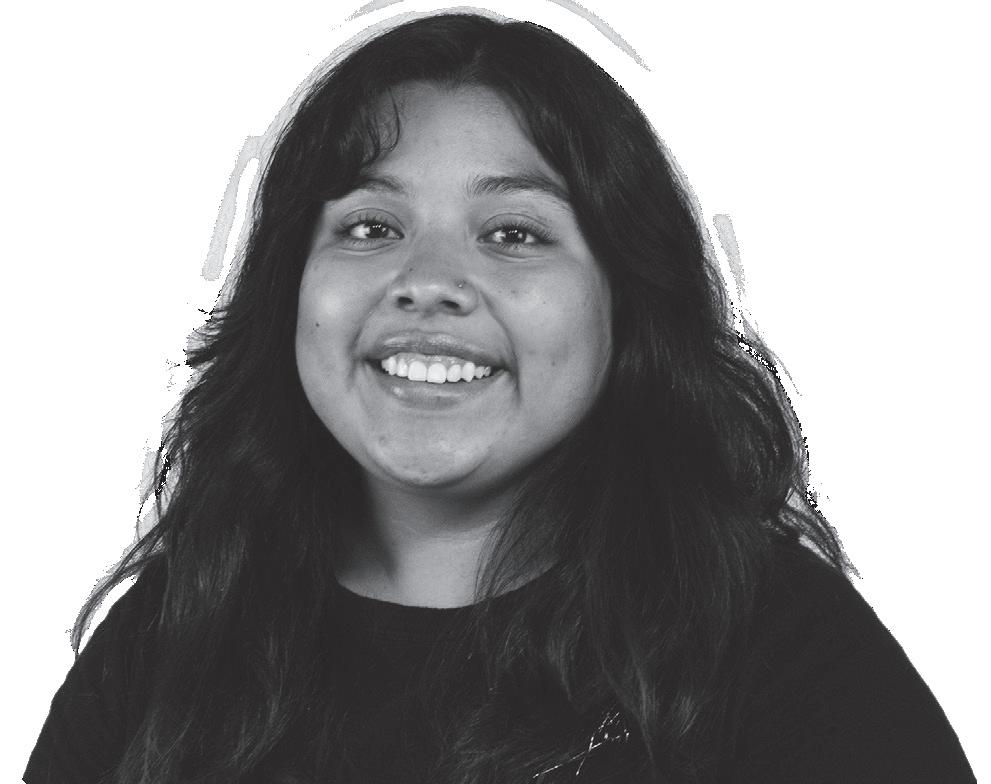
LUCIAN HIMES photo editor
Esquibias
Samantha Torre Addison Whiten
Wilt
ZACK BORN interactives assistant
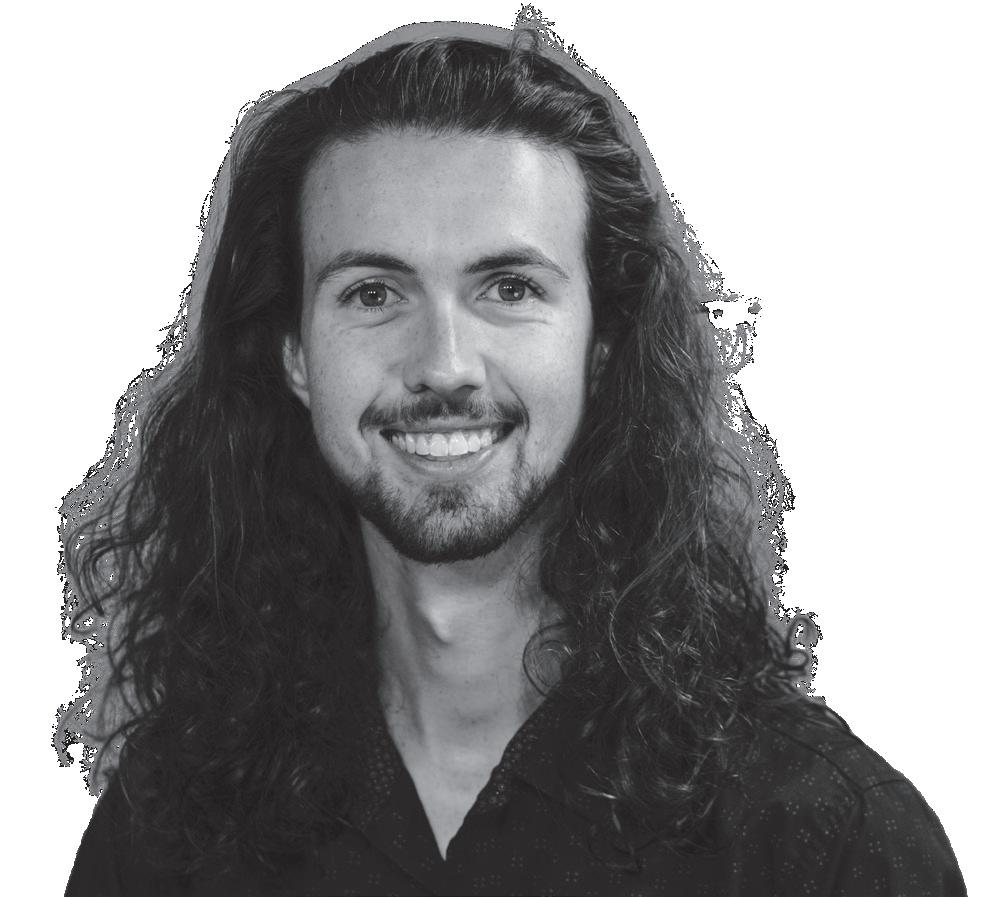

Advisers
Smith
Stallings
Writers Liza
Alec Matulka
Abby
Elizabeth
Courtenay
WELCOME TO: CLIMATE CHANGE
anthro • pogenic climate change
long-term
SAYS WHO ?
FOSSIL FUEL BURNING
CULTIVATION AND FERTILIZERS
THE IPCC
Scientists agree there is a >95% chance human activity caused
PRODUCTION
warming.
INDUSTRIAL PRODUCTIONDEFORESTATION WASTE IN LANDFILLS
gasses, contributing to
HOW DO WE KNOW?
STATED THE CHANGES CAUSED BY HUMAN ACTIVITY ARE
THE USGCRP
CONFIRMED HUMAN ACTIVITY IS THE
cause"
INCREASE
IN
OF
RINGS
IN
AND DURATION OF
CHANGING TEMPERATURE AND
PATTERNS

06
human generated
weather modifications
global
CROP
LIVESTOCK
all release greenhouse
climate change.
(the Intergovernmental Panel on Climate Change, a group of hundreds of climate experts) (the U.S. Global Change Research Program) "unequivocal." "dominant
OF THE GLOBAL TEMPERATURE
OF 1.8ºF FROM 1901-2016.
ICE CORES TREE
GLACIER LENGTHS POLLEN REMAINSOCEAN SEDIMENT EARTH'S ORBIT Scientists track the climate by analyzing: with climate change impacts (evidence):
PRECIPITATION
INCREASES IN OCEAN TEMPERATURES, SEA LEVEL AND ACIDITY MELTING
GLACIERS AND SEA ICE CHANGES
FREQUENCY, INTENSITY
EXTREME WEATHER EVENTS SHIFTS
ECOSYSTEM CHARACTERISTICS
The beginner's guide to understanding the Earth's rapidly changing climate.
CHANGE 101
WHAT'S THE DEAL WITH GREENHOUSE GASSES
NITROUS OXIDE
GHG EMISSIONSMETHANE
BLANKET THAT TRAPS THIS HEAT
greenhouse gasses in the atmosphere TRAP HEAT the greenhouse effect is when these gasses act like a
WHO ALL IS AFFECTED ?
Everyone is impacted, but people can be more vulnerable based on their:
AGE HEALTH
INCOME HEALTHCARE ACCESS
Populations of concern are groups with:
EXPOSURE TO HAZARDS SENSITIVITY
LOW ADAPTABILITY TO CLIMATE STRESSORS
The impact on vulnerable populations:
LOW INCOME MINORITY childhood asthma diagnoses = 15% more likely extreme temp. labor hours lost = 25% more likely
childhood asthma diagnoses = 27% more likely extreme temp. labor hours lost = 35% more likely
NO H.S. DIPLOMA
childhood asthma diagnoses = 16% more likely extreme temp. labor hours lost = 26% more likely
Climate change impacts peoples' health, the environment and the economy:
Warmer temperatures Increase the frequency, intensity and duration of heat waves

Ecosystem changes Influence plant/ animal species lifecycle events
Changes in rainfall Can affect water supplies, quality and electricity
Worsening air and water quality Increase the spread of diseases And alters frequency/intensity of extreme weather events
Increase losses to property, cause costly societal disturbance and reduce insurance affordability
Source: EPA.gov Spread by Ali Levens
07
?
CO2
+ + =
→
→
→
→
→
CLOSE TO HOME
climate change disproportionately affects populations in Malibu neighboring areas
 Collage by Ali Levens
Collage by Ali Levens
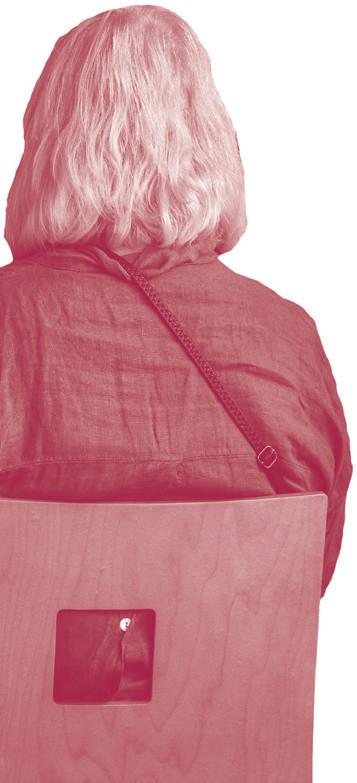


Top left: Two women attend the Malibu Senior Center emergency preparedness meeting. Photo by Lucian Himes
Bottom left: Carlie Domingues, who worked at the SYCEO, leads guests at the SYCEO's tribal nursery open house in 2020. Photo courtesy of the Santa Ynez Chumash Environmental Office

Top right: A woman carries her baby at the Spanish-language emergency preparedness training event. Photo by Lucian Himes
Bottom right: The Venice Family Clinic provides healthcare to unhoused individuals at the annual Homeless Connect Day on Sept. 22. Photo by Lucian Himes
08
HOME
disproportionately Malibu and
Spanish translations by Alyssa Medina
When the Woolsey Fire broke out in 2018, Pedro Marin, a 63-year-old day laborer from Downtown Los Ange les, worked in Malibu and had to flee the area. Marin said he tried to go back to find work a few days after the fire but could not get through due to closures on Pacific Coast Highway.
Marin lost about two months of work and experienced a conse quence of climate change first-hand.
“There’s an urgency, as we all know,” said Shea Cunningham,
climate resilience consultant at the Malibu Foundation, sustainability planner and principal of Balanced Approach. “It’s not about, like, ‘Oh, there’s climate change, and eventu ally our grandchildren are going to experience it.’ Like, we all know we are in the climate crisis now.”

The climate crisis dispropor tionately impacts day laborers like Marin, as well as people 65 years and older and the unhoused communi ty, according to the Malibu Founda tion’s 2022 report “Our Climate Cri sis, A Guide for Communities in the Wildland Urban Interface.”


Researchers have also identi fied Indigenous peoples and tribal cultural resources as vulnerable to

climate hazards, according to The Status of Tribes and Climate Change Report. Tribal cultural resources can include traditions and practic es grounded in physical sites, plants and animals.
Today, almost half of all humans, or 3.3 to 3.6 billion people, are “high ly vulnerable” to climate change, according to the 2022 Intergovern mental Panel on Climate Change re port.
The Malibu Foundation’s re port defines climate vulnerability as “susceptibility to exposure to the hazards associated with climate change,” and climate resilience as “the ability to withstand the impacts of these climate related hazards.”
09
The Malibu Foundation’s Report
The Malibu Foundation is a non profit organization that serves ar eas affected by the Woolsey Fire in rebuilding and recovery efforts, as well as works to achieve a climate re silient community, according to the Malibu Foundation website.
The organization released a re port in January, providing a climate vulnerability assessment and action plan for the Santa Monica Mountains Wildland Urban Interface region, which includes Agoura Hills, Cala basas, Hidden Hills, Malibu, Pacif ic Palisades, Sunset Mesa, Topanga and Westlake Village. The WUI is the transition zone between wilderness and human-developed land, accord ing to the Malibu Foundation report.
“The idea is that it’s a guide, not only for decision makers in the re gion, but also for community mem bers, residents, and to basically be come a more climate resilient larger, broader community,” said Cunning ham, who is also the principal inves tigator of the Malibu Foundation’s report.
The Malibu Foundation held a virtual public forum in February to discuss the report’s findings and rec ommendations. The organization also presented the report to all of the city councils in the region, except for Hidden Hills. Cunningham said the Malibu Foundation is trying to get on the Hidden Hills City Council’s schedule soon.
As periods of intense heat esca late and the drought becomes more acute, Cunningham said the Malibu Foundation is working on creating movement in the SMM WUI region’s cities to improve their climate resil ience.
Day Laborers
A large portion of the daytime population in the SMM WUI region includes day laborers, according to
the Malibu Foundation’s report. The majority of day laborers are Span ish-speakers with limited English language skills and come from a lower socioeconomic background. Many also commute to the SMM re gion by bus from South Los Angeles. Day laborers are disproportion ately vulnerable to the negative health effects of exposure to wild fire smoke and heat and are more likely to experience challenges with employment, mobility and commu nication during and after a climate disaster, according to the Malibu Foundation's report.
“They really are a population that needs support, especially since so many of them work outdoors and in extreme heat,” Cunningham said. “And when there’s fires and smoke from fire, they are especially at risk.”
Oscar Mondragón, who has served as the Malibu Community La bor Exchange center director for 29 years, agreed climate change direct ly impacts day laborers, especially those who work outdoors in agricul ture, construction or gardening — jobs many workers depend on for a living, Mondragón said.
“The gardeners are exposed to the sun, and being out, especially in the last couple of weeks, working out there, in the hills, in the house — especially in the hills — the heat is tremendous,” Mondragón said. “It’s hard, it’s difficult and especial ly because the effort is such physical work.”
The MCLE is a community non profit organization that connects people looking for work with pro spective hirers, according to the MCLE website.
During the Woolsey Fire in 2018, the City of Malibu sent emergency notifications in English and Spanish and also informed the MCLE so it could help spread the word to work ers to not take any jobs that day and go home until it was safe to return, Mondragón said.
Many day laborers experience communication and mobility chal lenges, according to the Malibu Foundation’s report. For example, they may face language barriers or technological limitations — such as lacking a cell phone or not signing up for the region’s notification sys tems.
An estimated 90% of the non-res ident day laborer community do not have a car, making it difficult to evac uate or access emergency response centers during an emergency, ac cording to the Malibu Foundation’s report.
The majority of day laborers com mute from South Los Angeles, where 30% of the population live below the poverty level, according to the Mal ibu Foundation’s report, and many have asthma due to prolonged expo sure to higher levels of industrial and transportation-related air pollution.
Wildfire smoke exposure can lead to significant respiratory inflamma tion, infections, disease and other negative health effects among day laborers, according to the Malibu Foundation’s report. The smoke dis proportionately impacts outdoor workers due to their longer periods of exposure to it while engaging in physically demanding work.
When it was safe to return to Mali bu after the Woolsey Fire, Marin said he visited the MCLE to find work — work that often involved dealing with the smoke from the fires.
“Mucha gente vino para que le fuéramos a ayudar a limpiar la casa y todo lo quemado que estaba, y tenía mos que usar mascarilla porque los olores eran muy fuerte [A lot of peo ple came — to the MCLE — so that we could help them clean up their homes and all the burned parts, and we had to use masks because the smells were too strong],” Marin said.
Mondragón said he encouraged workers to wear protective gear such as N95 masks and gloves if they worked jobs that exposed them to
10 CLIMATE CHANGE
smoke after the Woolsey Fire.
“After the fire, there is a problem that when workers go to work at a burn site, then it’s dangerous be cause whatever burned there might not be the healthiest situation to work under,” Mondragón said.
Some workers ended up in the hospital because they became sick after working at a burned house around toxic ash, Mondragón said. He advised people to avoid working under those conditions and without proper protective equipment.
About 83% of non-resident day laborers also lack health care cov erage, and an estimated 75 to 80% of the workforce are undocumented migrants, which restricts their abili ty to attain healthcare and financial support, according to the Malibu Foundation’s report.
Additionally, after a natural disas ter, many day laborers lose their jobs and may not be eligible to receive state or federal financial assistance because of the inconsistent nature of their employment, according to the Malibu Foundation’s report.
“Cuando hay (trabajar), hay [When there is — work — there is],” Marin said. “Cuando no hay nos queda expiración [When there isn't, we are left without work].”
After the Woolsey Fire, Mon dragón said some organizations in L.A. raised money for day laborers in the area who lost their jobs — MCLE's physical location in Malibu made it difficult to raise funds.
During the COVID-19 pandemic, the MCLE received a special fund ap peal and raised money to help send checks to workers’ homes, regardless of their documentation status, Mon dragón said.
To prepare Spanish-speaking workers and their families for emer gencies like wildfires, the MCLE hosted an annual Spanish-language emergency preparedness training event Sept. 24, in collaboration with the City of Malibu, the Malibu Foun dation and Pepperdine Hispanic Studies professors and students.
Marin and Sebastian Hernandez, another day laborer, were two of about 50 workers and family mem bers who commuted to the MCLE for the emergency preparedness event, Mondragón said. Marin and Her nandez both said they came to the meeting to learn basic first aid, what to do in the case of a natural disaster and how to help one another during those situations.
“Estamos bien preparados; ya van dos veces que han venido [We're
well prepared; they’ve — emergency preparedness teachers have — been here twice now],” Marin said. “Con las experiencias que uno va viviendo ya uno puede defenderse o ayudar a los demas [With the experiences that one lives, one can defend oneself or help others].”
Marin said he works small and big jobs, including helping move peo ple's belongings and cleaning. These jobs can last from an hour to multi ple months — the hirers decide the workers’ schedules and have control over how long the projects are.
Marin said it can be hard when work is not guaranteed, especially for those who may experience phys ical limitations. Many workers at the MCLE stand ready as a resource for employment, Marin said.
People 65 Years and Older
There is a higher proportion of adults 65 and older in the SMM WUI region compared to L.A. County as a whole and to any other region — 12.45 of L.A. County’s residents are older adults, compared to 22% of the SMM WUI region’s population, ac cording to the Malibu Foundation’s report.
Similar to the day laborer

ENVIRONMENTAL JUSTICE 11
Community, this large population of older adults, or people over the age of 65, disproportionately experience negative health impacts of natural hazards, especially due to pre-ex isting health conditions that exac erbate the effects, according to the Malibu Foundation’s report.
“Air pollution and heat-related health conditions can be a real issue for seniors, especially with pre-ex isting conditions,” said Jesse Bob bett, community services director at the City of Malibu. “That’s definitely something to consider as well.”
Older adults are more susceptible to heat exhaustion, heat stroke and other complications, leading to a higher risk of morbidity and mortal ity during extreme heat occurrences, according to the Malibu Founda tion’s report.
Bobbett said he has seen climate change limit older adults from so cializing, going outdoors and run ning errands, such as obtaining medical care.
While a large portion of the gen eral population realized the mental hardship of being alone during lock downs as a result of the COVID-19 pandemic, many older adults expe rience isolation on a regular basis, which only compounded during the
pandemic, Bobbett said.
“As you get older and you tend to lose friends or loved ones and around you, so it can feel very iso lating at times,” Bobbett said. “And I think climate change does add to that because it limits how much you can be outside.”
During a period of extended heat waves in early September, Malibu opened cooling centers at Michael Landon Community Center at Bluffs Park and the Malibu Library, where people can come and sit in the air conditioning and recover from the heat, Bobbett said.
The most fire-prone areas of the SMM WUI region are, in general, also where the highest proportions of older adults live, according to the Malibu Foundation’s report.

Wildfire smoke presents a signifi cant health risk to older adults sensi tive to air pollution, according to the Malibu Foundation’s report.
The older adult community also experiences technology commu nication challenges that the City of Malibu’s Community Services de partment hopes to help with, Bob bett said.
Bobbett said the Malibu Senior Center sends out a newsletter to older adults sharing city updates.
The City also offers technology help sessions on Fridays, assisting older adults with using technological de vices, including signing them up for various regional notifications.
During an evacuation due to a fire, the older adult population is also more likely to face mobility limitations and not be able to drive themselves out in a personal vehicle, according to the report.
To help older adults in Malibu get to and from healthcare destinations and other services at a low cost, the City of Malibu’s Community Services department offers a Dial-A-Ride pro gram, Bobbett said. The program is not an emergency service but can help older adults get to medical ap pointments.
Cunningham said she was sur prised to find in her research that many older adults are on fixed in comes even though Malibu is a rel atively affluent area. This financial limitation makes it more difficult for older adults to harden their homes for wildfires and install solar energy systems or other climate resiliency systems.
The Malibu Senior Center held an emergency training session for all older adults Sept. 28. Brent Wood worth, CEO of the L.A. Emergency Preparedness Foundation, gave a presentation at the event.
Mimi Rose, who has lived in Mal ibu for 24 years, and her sister Homa Bald, a 75-year-old Santa Monica resident, both said they attended the meeting to learn more about emer gency preparedness.
Rose said she is a physician and worked at the U.S. Department of Veterans Affairs, and Bald said she worked in real estate and is familiar with considering natural disasters in home stability. Throughout their time in Southern California, they said they witnessed houses catch ing on fire and saw how fast fires can spread and cause damage.
Bald and Rose emigrated from
12 CLIMATE CHANGE
Iran and although they did not grow up in poverty, Bald said they were not “very well off.” As a result, Bald said she is conscientious of reducing her water usage and food waste.
“I think people here, every indi vidual, is responsible for the Earth, and we are not giving respect to the Earth,” Bald said. “We have to respect that.”
The Unhoused Population
Rose said she is also concerned about those experiencing homeless ness.
“When there’s heat, where do they [those experiencing homelessness] live and what do they do?” Rose said. “Can you imagine when we’re in a house, how difficult that is under a tent?”
About 150 to 170 people expe riencing homelessness live in the SMM WUI region, with most seeking shelter along the Malibu coastline, according to the Malibu Founda tion’s report.
Luis Flores, public safety liaison at the City of Malibu, said the annual homeless count numbers have gone down in the last year. This year, the City counted 81 unhoused individ uals in Malibu. In 2021, the count showed 157 people. He attributed the decrease to the efforts of organi zations and the City of Malibu.

“We’re very proactive and ser
vice-driven and wanting to be very intentional about the way we help out folks who are obviously severely impacted by climate change, like the weather we're seeing and the poten tial fire that could happen in some of these hills,” Luis Flores said.
Jason Flores, program manager of Malibu and Pacific Palisades out reach team at The People Concern, said outreach teams go out every day to check on unhoused individuals in the area, especially during periods of severe heat. The People Concern is an L.A. County social services agen cy that supports the unhoused popu lation, according to The People Con cern’s website.
Jason Flores said there have been some cases of sun poisoning and dehydration, as well as sunburns. The People Concern hands out wa ter and sunscreen to clients, as well as partners with the Venice Family Clinic, an organization that provides healthcare every Thursday in Malibu and every Tuesday and Thursday in the Pacific Palisades.
Zachary Coil, director of West side outreach at The People Concern said the VFC has found skin cancer on multiple unhoused individuals in Malibu, which Coil partly attribut ed to the lack of shade in the coastal city.
“There’s not a lot of buildings, and there's not a lot of trees,” Coil said. “It’s this Chaparral environment,
which is very dry, so there’s long term effects of being out there, but again, that’s because of the habitat really more than anything.”
Juan is a 74-year-old day laborer who has spent 20 years living out of his truck and is also one of The Peo ple Concern’s clients. He earned a living through working various jobs; however, it was not enough to afford stable housing, according to The People Concern. Juan also said he had skin cancer.
By April, the VFC treated Juan's skin cancer, according to The People Concern. Juan also eventually found himself permanent housing with support from The People Concern and the MCLE.
“Everything’s OK, everything is good — everything,” Juan said.
Jason Flores said Juan is one of a few unhoused individuals who have received treatment for medical is sues caused by sun damage. One person who lives in Tuna Canyon had a lesion near his eye that the VFC removed and treated through a couple surgical procedures a few months ago.
“Aside from heat stroke and death, those would be the most se vere types of cases that we’ve seen,” Jason Flores said. “The other will be your dehydration, sunburn, that type of stuff, and then just hygiene.”
Jason Flores said the outreach teams also raise awareness among unhoused individuals about the dangers of the dry climate and fires and warn against starting fires due to the high wildfire risk.
The City of Malibu passed legisla tion Sept. 27, to move all unhoused individuals living in Very High Fire Hazard Severity Zone areas out, “while also ensuring these efforts do not criminalize individuals living unhoused.”
City of Malibu Mayor Paul Gri santi said the City Council plans to work with the Homeless Out reach Sheriff’s Team and The People
ENVIRONMENTAL JUSTICE 13
Concern outreach team to provide transportation and housing for un housed people in hazard zones.
“They constantly are monitor ing the hills for encampments and trying to communicate with people that they need to be safe and offering them other places to live,” Grisanti said in an interview with NewsWaves 32.
Jason Flores said he knows several individuals who reside in fire-prone area like Tuna Canyon.
“There’s people that live in there,” Jason Flores said. “So if something like that were to happen, it would be devastating.”
Jason Flores said the Malibu Homelessness Task Force is working on establishing an Alternative Sleep ing Location in the region to offer to unhoused people.
In the case of a fire, The People Concern works with the L.A. County Sheriff's Department to help locate unhoused clients, Coil said. At the evacuation sites, staff from The Peo ple Concern check in with people, are available as a resource to support them and give out supplies such as KN95 masks, Coil said.
Jason Flores said communication challenges and barriers are prevalent due to the nature of working with peo ple who might be dealing with men tal health challenges, do not have a permanent residence or might not have reliable access to a form of
electronic communication.
To help overcome these barriers, The People Concern offers portable charging batteries to unhoused cli ents to help them keep their elec tronic devices charged and have access to some form of digital com munication, Jason Flores said.
In some areas, there are small un housed communities where a couple clients of The People Concern have taken on a leadership role in distrib uting important information to ev eryone.
“They kind of look out for each other in a sense and are the liaison, if you will, to information that we have and resources that we have available as well,” Jason Flores said.
The Chumash Tribe
The Malibu Foundation’s report acknowledges the Santa Monica Mountains as the ancestral lands of the Chumash Tribe, the Gabrieli no Tongva Tribe and the Tataviam Tribe.
“With gratitude, we honor this land and the people who have been its environmental stewards for thou sands of years," the Malibu Foun dation wrote. "As such, we are com mitted to doing our part to become better stewards of this region by con serving its precious resources.”
About 200 years ago, an esti mated 20,000 Chumash lived in
California; today there are about 4,000 to 5,000, according to the Mali bu Foundation’s report. Many sacred burial sites and other artifacts of his torical and cultural significance lie in the Santa Monica Mountain region. Climate hazards and private devel opment threaten the preservation of these sacred sites.
Teresa Romero, environmental director of the Santa Ynez Chumash Environmental Office, said she has been with the tribe since 2016 and worked in tribal government since 1997. The Santa Ynez Band of Chu mash Indians Reservation, located in Santa Barbara County, is the only federally recognized Chumash Tribe in the country.
Romero said the migration and endangerment of traditionally im portant plants and animal species due to changing habitats and im pacts of erosion on cultural resourc es concern tribe members.
“I think climate change looks very different for tribes than the larger population because the impacts to resources really impact community in a really, really major way,” Rome ro said. “And like many people in the region, there's concern about wild fire, there's concern about drought.”


In 2021, the Institute for Tribal Environmental Professionals Tribes and Climate Change Program re leased The Status of Tribes and Cli mate Change Report.

14 CLIMATE CHANGE
Photos by Lucian Himes | From left: Sebastian Hernandez, Spanish-language emergency preparedness meeting attendee. Juan, Connect Day attendee. Homa Bald and Mimi Rose, Malibu Senior Center emergency preparedness event attendees.
The report details how climate change effects threaten traditional tribal sites and artifacts and can al ter traditional hunting and gathering practices, timing of spiritual practic es, loss of local food sources, loss of traditional medicinal plants and loss of traditional materials.
“Climate change is threatening tribal cultural resources ranging from tangible archaeological sites to intangible cultural beliefs and val ues,” the ITEP wrote.
Tangible tribal cultural resources can include physical sites, artifacts and landscapes, as well as culturally significant plant and animal species, according to the ITEP report.
Climate change's effects on tan gible resources can also impact cul tural practices and traditions linked to the climate, according to the ITEP report. For example, climate change disrupts ceremonies based on sea sonal changes and events, pushing the ceremonies back or preventing them from taking place. It also threat ens culturally significant plants spe cies used for medicinal, ceremonial and edible purposes.
Romero said the SYCEO educates the community, both inside and out side the Chumash Tribe, about po tential threats to resources and how to protect them.
“Climate change doesn't happen in a silo, for instance, in one area,” Romero said. “We really need to
work together to create resiliency in our communities.”
Green Business Certification Inc. awarded the Santa Ynez Band of Chumash Indians and their casino resort for their waste sorting efforts.
“The tribe as a whole, not just my department, has a huge sustainabili ty role here locally," Romero said.
Romero’s team implemented zero waste practices, such as sorting all the waste at tribal events. The tribe also supports electric vehicles, as there are charging stations on the reservation, Romero said.

As a member of the executive committees for the Central Coast Climate Collaborative and the Cen tral Coast Climate Justice Network, Romero said she is part of efforts supporting climate equity and jus tice regionally.
“I think the local Indigenous voic es not only here, but throughout the United States, need to be included in those planning and adaptation efforts because oftentimes, they get overlooked,” Romero said.

Romero said being aware of one’s own footprint and reducing one’s use of fossil fuels through composting, for example, are little regenerative practices everyone can do on a daily basis that will make a difference on a larger scale.
The SYCEO recently started a pi lot composting program on the res ervation, where they collect organic
matter, put it into a compost at their tribal nursery and use it for agricul tural purposes, Romero said. The main focus of the nursery is to pro vide culturally significant plants for the Chumash community.
“It's about having people under stand what they can do on their own, as well as to engage in their local region on climate issues — I think that's really important too,” Romero said.

Romero said she thinks what has been lost to most of the general pop ulation is the understanding of the reciprocal, balanced relationship between humans and the environ ment.
“I think one of the things that sets us [Indigenous people] apart is that we understand that when we care and steward the landscape, our tra ditional landscape, we're caring for it, and the landscape cares for us, and that's a circle that's created,” Romero said.
Romero said universities, local agencies and organizations should reach out to include local Indige nous communities in their research and planning efforts related to cli mate change.
“I think that's really, really im portant because we need to under stand the research that's being done, and if there's a way to collaborate, or whether there's knowledge there that we should have,” Romero said.
ENVIRONMENTAL JUSTICE 15
Pedro Marin, Spanish-language emergency preparedness meeting attendee. Diego Cordero, lead environmental tech nician at the SYCEO at a 2019 powwow | Photo courtesy of the Santa Ynez Chumash Environmental Office
FORGED BY extreme weather events threaten Malibu

16
by Alec Matulka & Addison Whiten
Drought. Heat waves. Wild fires. People who don't ex perience extreme weath er events might view them as abstract and otherworldly. But the lines between abstract threat and immediate danger have repeat edly blurred for Pepperdine Univer sity and the Malibu community, such as when the Woolsey Fire burned onto campus in November 2018.
Alumna Emily Stephens (’22) was on Pepperdine’s Malibu campus the day the Woolsey Fire came. Stephens
grew up in nearby Oak Park and had prior experiences with wildfires, so as Woolsey approached campus, her peers asked her if what was going on was typical.
"At that point, I told them, 'No, this is unlike anything I've ever experi enced living and growing up in the area,'" Stephens said.
Stephens sheltered in place in the Tyler Campus Center and slept on the floor of the Caf the night of Nov. 9, 2018. She said she vividly remem bers seeing how the fire turned the night sky bright red through the Caf windows.
“It looked like it was daytime," Ste phens said. "It was almost like this

weird apocalyptic setting because ev erything was on fire around us, so it was actually quite bright outside."
Extreme weather events like wild fires have become more frequent in Malibu over recent years, according to WeatherWest.com. Beyond the increased regularity, the severity of these events is mounting — in the past 30 years, Malibu has witnessed at least five wildfires larger than 3,500 acres.
Chris Doran, professor of Religion and Sustainability and founder of the Sustainability major and minor, said the increased frequency and severity of these events is due to anthropogen ic, or human-made, climate change.
BY 17
Photos by Lucian Himes
More Heat, Less Water
Anthropogenic climate change is a broad term covering the human impact on Earth's climate. Part of climate change is the more specific phrase “global warming,” which refers to the increase in the Earth’s overall temperature since the pre-industrial period of the 19th century, according to NASA.


Since then, Earth’s temperature has increased by about 1 degree Cel sius — 1.8 degrees Fahrenheit — and increases each decade by more than 0.2 degrees Celsius — 0.36 degrees Fahrenheit.
The current warming trend is in disputably the result of human activ ity — specifically the burning of fossil fuels — since the 1950s, and is playing out at an unprecedented rate, accord ing to NASA.
The burning of fossil fuels like coal and natural gas emits carbon dioxide, a greenhouse gas that holds in heat, Biology Professor Helen Holmlund
said. The amount of carbon dioxide in the atmosphere has increased greatly since the Industrial Revolution, lead ing to the globe’s warming, according to the National Oceanic and Atmo spheric Foundation.
“We're putting a thicker blanket on the Earth, and it's just trapping more of the sun's radiation,” Holmlund said.

While global warming and climate change have become modern politi cal and social issues, Holmlund said understanding that rising tempera tures would pose problems is nothing new.
“That relationship has just been known for a really long time,” Holm lund said. “It's been proposed that it will be an issue for a really long time, that adding CO2 to the atmosphere would be an issue in terms of rising temperatures.”
The Paris Agreement of 2015 draft ed a "1.5-degree goal," which hoped to limit global warming to 1.5 degrees Celsius. Organizers of the Paris Agree ment asked the Intergovernmental
Panel on Climate Change to draft a report extolling the benefits of such a plan, according to the IPCC's website.
Despite the ambitions of the IPCC, Doran said dreams of keeping the global temperature increase below 1.5 degrees Celsius are a thing of the past.
“Not only are we going to fly past 1.5, most likely, but that 1.5-degree number was a really conservative estimate,” Doran said. “Now, we’re starting to realize there’s some conse quences already happening the closer and closer we get to that.”
Doran said the Earth is already experiencing the immediate effects of the rapidly increasing global tem perature: rising sea levels due to per mafrost and glacial melts, as well as ice-sheet break off. Low-lying Pacif ic island nations such as Tuvalu and Vanuatu — home to hundreds of thou sands of people — are already facing these consequences, Doran said.
“We are in a tough spot, because I think our best science from a de cade ago is not our best science now,”
18 CLIMATE CHANGE
Doran said. “We’re seeing that the situation is much more dire than we thought a decade ago.”
Despite the term "global warm ing," not every region on Earth will ex perience climate change as an actual increase in temperature, Holmlund said, but the rising carbon dioxide levels in the atmosphere still affect the entire planet.
“It's rising global temperatures, so you might have regional higher or lower increases, or maybe even some regional decreases, but the overall av erage is increasing,” Holmlund said.
While sea-level rise will not direct ly affect Pepperdine's campus, con sidering its elevated location, Dor an said heat waves like the one that pushed temperatures to 98 degrees in August will become more common and more severe. Limited air condi tioning in Pepperdine dorms, Doran said, could pose a serious problem to student health.
One effect of rising global tem peratures is an increase in droughts,
specifically in regions that are already prone to drought — like Southern Cal ifornia. Just as rising global tempera tures affect local climates differently, Holmlund said rainfall patterns will be similarly affected.

“Climate models show that some areas will have less rainfall, some will have more rainfall, but by drought, a lot of times what we mean is water deficit,” Holmlund said.
Water Deficits in Wildlife
A water deficit, or the amount of water plants could use if it was avail able, leaves them more susceptible to burning, Holmlund said.
Global warming causes water defi cits in droughts. This is especially true in Malibu, considering the region im ports all its water from the West Basin Municipal Water District, according to LACounty.gov.
Holmlund said droughts can also hurt plants by depriving them of water.
“When you have warmer tem peratures, essentially you have more evaporative water loss from the soil,” Holmlund said. “So, less water in the soil means less water for the plants.”

Rising temperatures, and there fore more evaporation, means there is more of a demand for water to leave plants than there is supply of water in the soil for plants to consume, Holm lund said. This process is damaging to plants, as it puts a strain on their vas cular systems.
“That [process of excess evapo ration] can cause an embolism, an air bubble in the vascular system,” Holmlund said. “Just like an embo lism is bad in our vascular system, an air embolism — an air blockage in the plant system's vascular system — is a bad thing. It's a thing that can choke plants.”
When plants are drought stressed, they don’t produce as much food for animals, Holmlund said. If plants die due to drought, wildlife loses vital habitats.

FIRE AND DROUGHT 19

WOOLSEY, 2018 96,949 acres OLD TOPANGA, 1993 16,468 acres CORRAL, 2007 4,708 acres CANYON, 2007 3,839 acres CALABASAS, 1996 12,513 acres five fires. 134,447 acres. Source: L.A. Times Graphic by Ali Levens WILDFIRES NEAR OR ON CAMPUS SINCE 1993 PEPPERDINECITYOFMALIBU 20 CLIMATE CHANGE
Fueling the Fires
Rising temperatures, a drought in full-swing and normal plant and vegetation unable to naturally cope — these are ideal conditions for more frequent, severe wildfires, said Bradley Yocum, a retired L.A. Coun ty Fire Department fire fighter. For example, the Woolsey Fire was the worst wildfire in the past 90 years, according to the L.A. Times.
Yocum said the Santa Monica Mountains and Malibu are part of a fire climax community, meaning they exist in an ecosystem where fire is the dominant control factor. Wild fires have been, and continue to be, a natural part of the surrounding ecosystem. The chaparral biome and its coastal sage brush require occa sional fires to burn away decrepit plants and make way for new growth, Yocum said.
While chaparral vegetation with stands wildfires, Holmlund said the shrubs require them about every six years to have new growth. Major wildfires occurred in 1993 and 1996, Holmlund said, killing off "seeder" shrubs that can usually reproduce after fires.
"We still have some in a few iso lated patches, but a lot of them are gone," Holmlund said.
The City of Malibu hired Yocum along with Greg Hisel, retired LACFD Assistant Fire Chief, in May. Yocum said the department intended for the hires to increase the city’s proactivity in fire preparedness, and he appreci ates the city government’s response to the Woolsey Fire.
“I’ve been pretty impressed, be cause the education [the city of Mal ibu is] trying to show folks, the free programs, the money that will be available to some residents to mit igate these issues; they’re actually doing quite a bit,” Yocum said. “It’s not if, but when the next fire comes, they’re doing what they need to do.
You can always do more, but they’re going in the right direction.”
The problem is not wildfires in general, Yocum said. The problem is their interaction with people, which has increased alongside Malibu’s population over the past 30 years. Yocum said when people started moving and building homes in Mal ibu, they unintentionally created more fuel for wildfires as a byprod uct.
“When you build a home and it's made of wood, that’s also a fuel source,” Yocum said. “When [peo ple] started moving in, they start ed planting high-fire hazard type plants: palms, acacia, eucalyptus, pines. It just made it worse.”
Pepperdine is no stranger to these wildfires: At least wildfires have im pacted the Malibu campus since 1993, according to Pepperdine's emergency information website. The exact amount of money Pepperdine has spent on fire prevention and wildfire-related damages is unclear because Chief Operating Officer Phil Phillips declined to respond to emailed questions.*
Pepperdine utilizes a shelter-inplace policy during wildfires, which the LACFD reviews annually. Ste phens said the Caf was still open during the Woolsey Fire, which made the ordeal more bearable.
“They were great at keeping all of us kind of calm, keeping us in like a sense of, 'Oh, we're being fed, we're being taken care of,'” Stephens said.
*The Graphic reaches out to every source multiple times to request an interview. In some cases, these sources may decline to comment. The Graphic conducts real-time interviews for in-depth stories and only uses email responses for data or when a source cannot participate in a real-time interview.
Education As a Solution
Thinking back to November 2018, Stephens said hers and her peers'
experiences with the Woolsey Fire made the seemingly-remote impacts of climate change feel all too close.
“If you want to put a positive spin on it, it was a great educational op portunity to kind of bring to light this larger issue of climate change," Ste phens said.
Fighting wildfires starts years be fore they have burned a single acre, Yocum said. To prepare, students and young people need to learn that wildfires are burning more frequent ly and longer due to climate change.
“Education is paramount,” Yocum said. “Those are the folks that are go ing to be managing our forests, man aging our cities, managing commu nities. They’re going to want to know how to handle these things.”
Doran said he agrees more educa tion is needed, and that Pepperdine needs to be more direct in its lan guage with regard to climate change.
“When our Center for Sustainabil ity website says, ‘We have an open dialogue on climate change and sustainability,’ and uses this kind of code language, it seems to me that we’re not doing our best job in saying that all the science is as accurate as it can be, and so we should be treating this deadly seriously,” Doran said. “There’s a missed opportunity, con sidering our public-facing website doesn’t even talk about this issue.”
Doran said progress will look like more students being educated on sustainability and sound like more direct language from Pepperdine re garding climate change.
When progress is made, Holm lund said, it is vital to recognize and appreciate it.
“It's also really important to cel ebrate steps in the right direction,” Holmlund said. “It doesn't have to be an all or nothing. We're not going to give up just because we can't stop it tomorrow, right? We celebrate steps in the right direction and continue to work for progress.”
FIRE AND DROUGHT 21
consumers develop closed-loop food
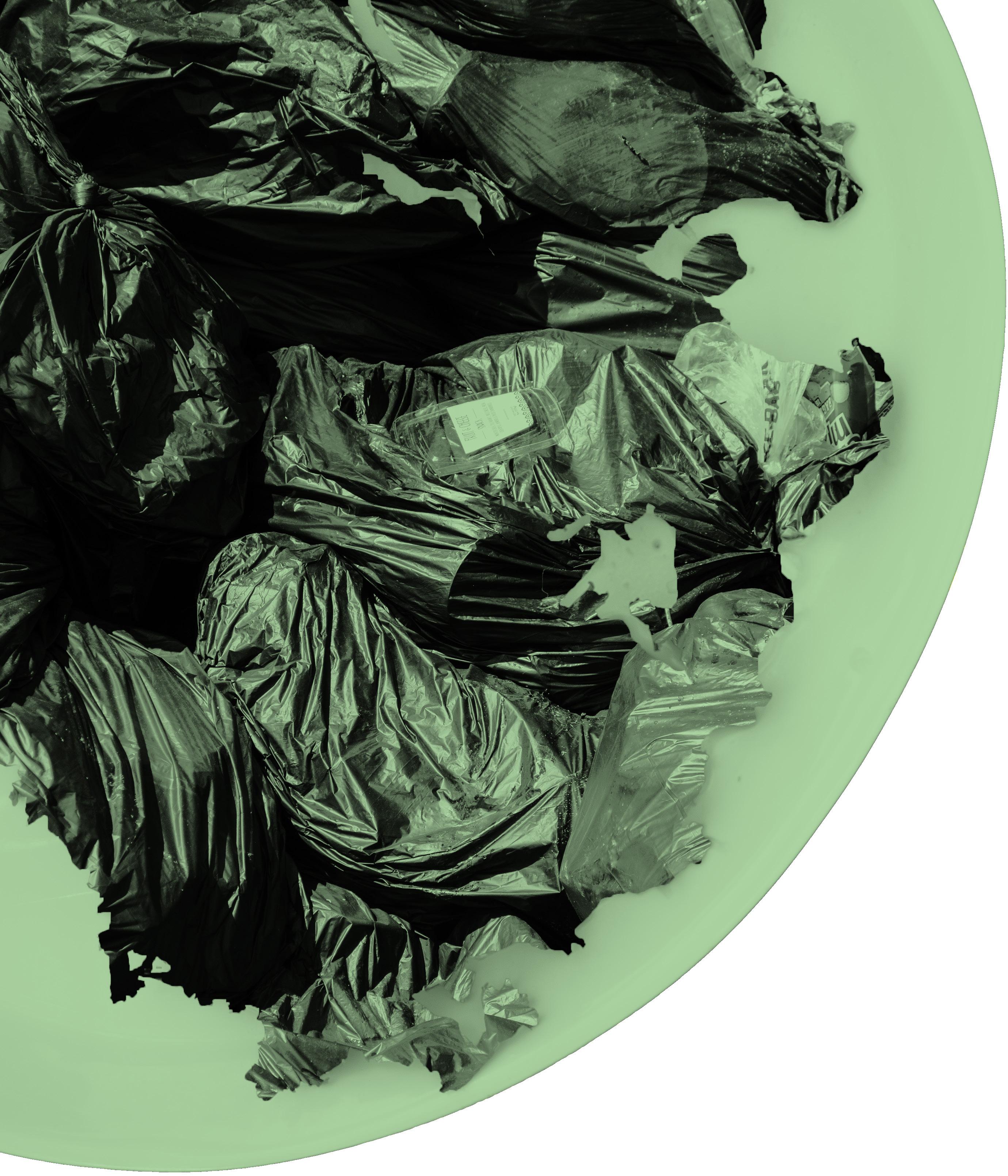
22
Photos by Lucian Himes
Photo illustration by Ali Levens
WHAT A WASTE consumers develop a closed-loop food system
by Ali Levens
Reducing food waste is the No. 1 individual solution to decrease carbon diox ide emissions, according to Drawdown.
In 2010, the United States wasted 133 billion pounds of food — over 4,000 pounds per person — accord ing to the USDA. L.A. County is no ex ception, as it produces over 8 million
pounds of food waste daily, according to L.A. County Sanitation Districts.
The United States — and Pep perdine — can create a closed-loop system to slow the acceleration of climate-changing greenhouse gas emissions, said Brittany Allison, assis tant professor of Food Science at Cal ifornia State University, Northridge and former Pepperdine visiting pro fessor of Biochemistry. A closed-loop system recycles organic matter and its nutrients back into the soil through
gardening and composting.
“Focusing in on composting is a reminder the natural order of things is not disposal,” said Mallory Finley, senior Economics major, Sustainabil ity minor and the Chris and Amy Dor an Climate Fellow. “There is nothing new on this planet. [Waste] is not go ing anywhere; it’s staying here with us.”
Since waste is inevitable, humans can either deal with it via an open- or closed-loop system.
23
The Open-Loop Cycle
The open-loop food cycle is a common waste system: food is pro duced, distributed, sold, eaten, then thrown away, according to the EPA. At the landfill, about 25% of the waste is food.
The food supply chain has emitted a quarter of all anthropogenic green house gas emissions, totaling over 13 billion metric tons of heat-trapping gasses that have entered the atmo sphere, according to a 2018 study conducted by Joseph Poore and Thomas Nemecek.
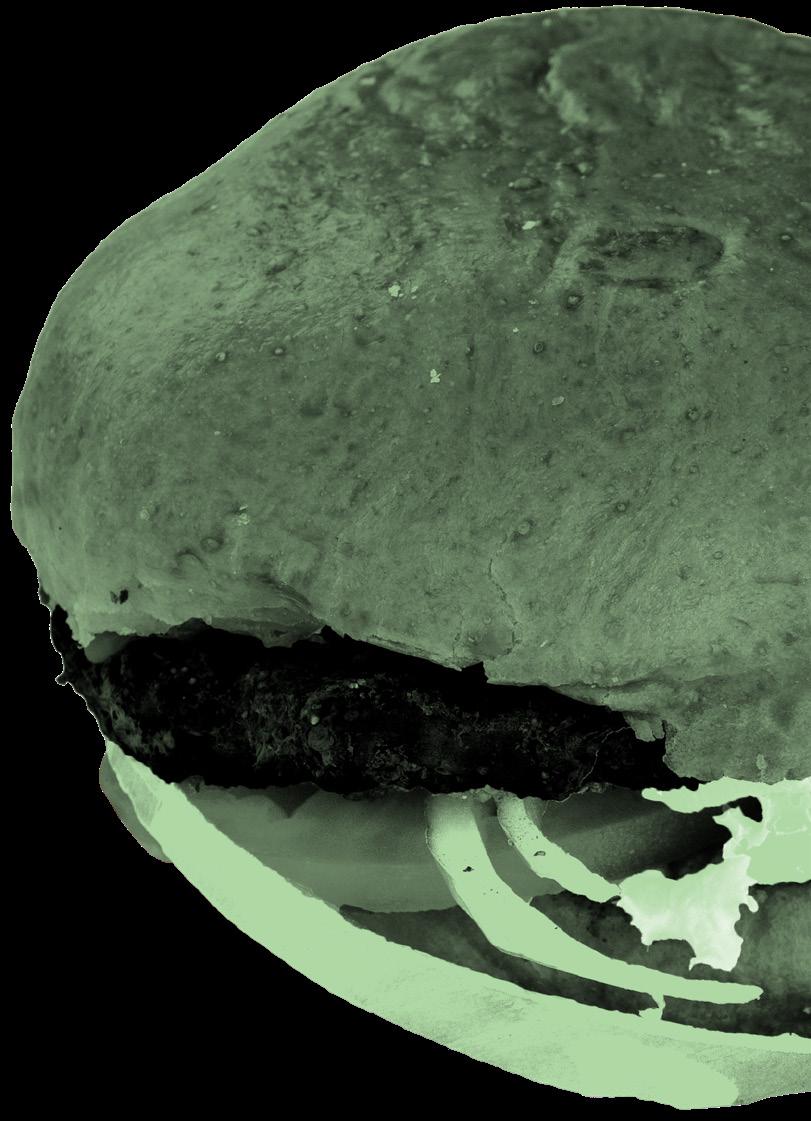

“We’ve kind of been taught and in undated with this idea of waste being inevitable,” Finley said. “That’s a new idea, right. We weren’t always waste ful. We had to be convinced that it was worth it to throw things away, and companies had to work really hard to make it cheaper to incentivize people to literally throw something away when they were done with it.”
The greenhouse gas emissions do not stop once food hits the plate. When sent to decompose in a landfill, food waste scraps emit meth ane — a greenhouse gas 23 times
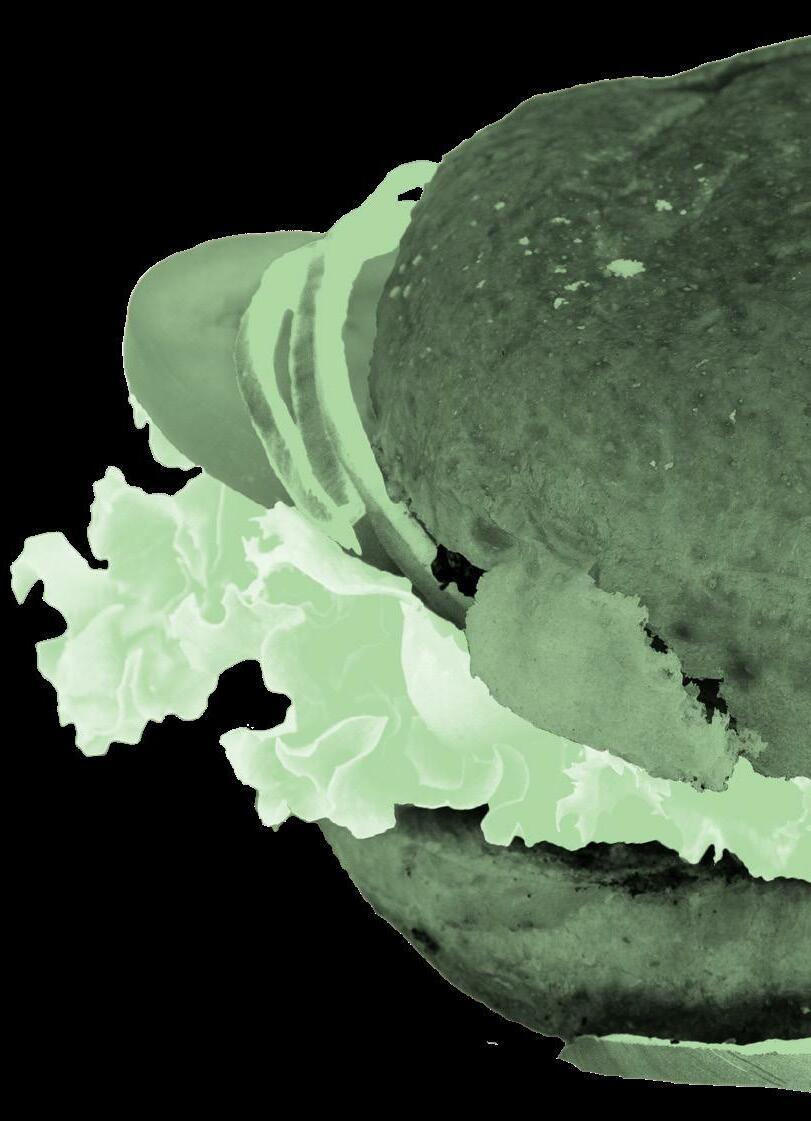
more effective at trapping heat than carbon dioxide, according to LACSD. Greenhouse gasses trap heat from the sun on the surface of the planet, which is known as the greenhouse ef fect, Allison said.
As layers upon layers of waste sit on top of each other in a landfill, Al lison said the decomposition of the waste creates methane because the deep parts of the waste piles do not have adequate oxygen supply.
“If we can avoid methane, that’s beneficial for everybody,” Allison said.
Another waste system, however, can reduce greenhouse gas emis sions.
The Closed-Loop Cycle
Instead of sending food to a land fill, Allison said consumers can set their organic waste aside to create compost — a nutrient-rich substance that can be added to soil to increase its health.
“There’s tons of nutrients locked up in things like food and yard waste,” Allison said. “It’s better to see those going back into the soil than just
Open-Loop Cycle
is grown or produced,
24 CLIMATE CHANGE
Food is produced, distributed and sold
Consumer eats food
Food waste goes to land ll
Land
ll traps food, creating methane
Food
Closed-Loop Cycle
getting trapped in a garbage heap somewhere.”
Composting benefits the environ ment in many ways, according to the EPA. It reduces methane emissions, sequesters carbon, increases water retention, assists in higher crop yields and helps rehabilitate habitats and hazardous waste areas.
As organic materials break down into compost, carbon dioxide is re leased, Allison said. Then, plants — which photosynthesize by taking in carbon dioxide and releasing ox ygen — create a “net-zero” of emis sions because the carbon dioxide the plants remove from the atmosphere returns through composting. This gas exchange differs from burning fossil fuels, which takes underground car bon, releases it into the atmosphere and creates a “net-positive” of carbon emissions.
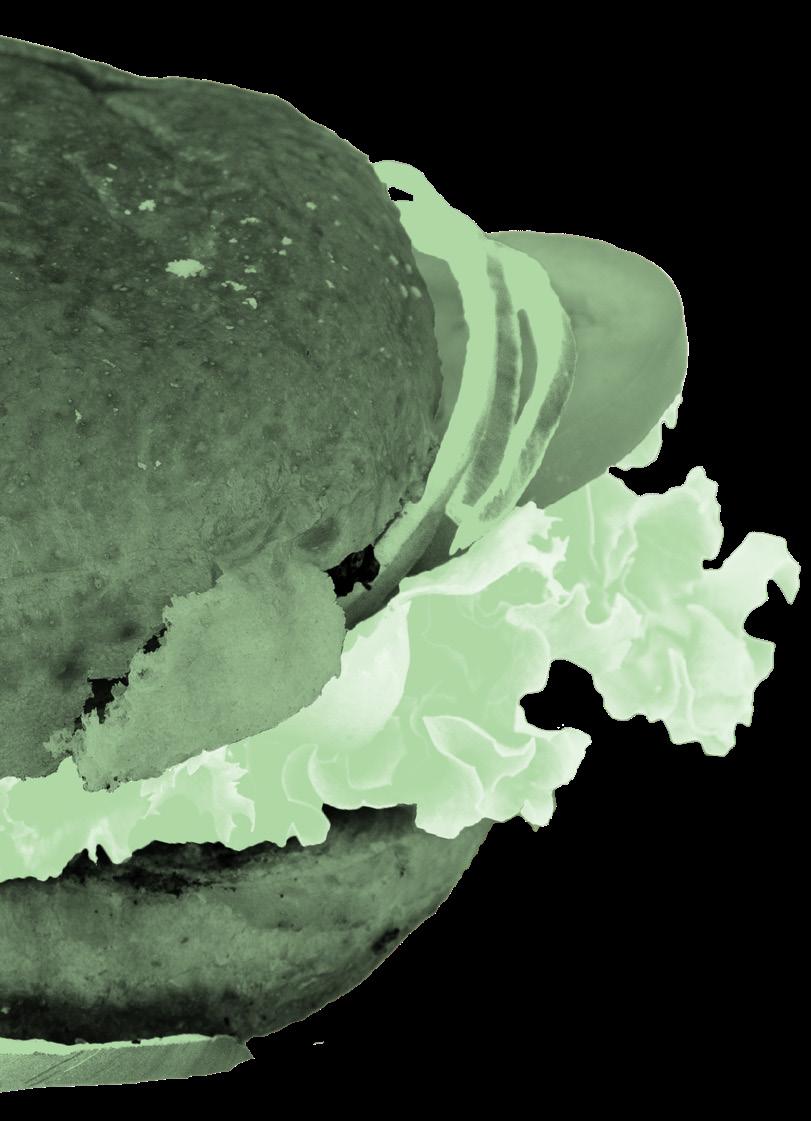
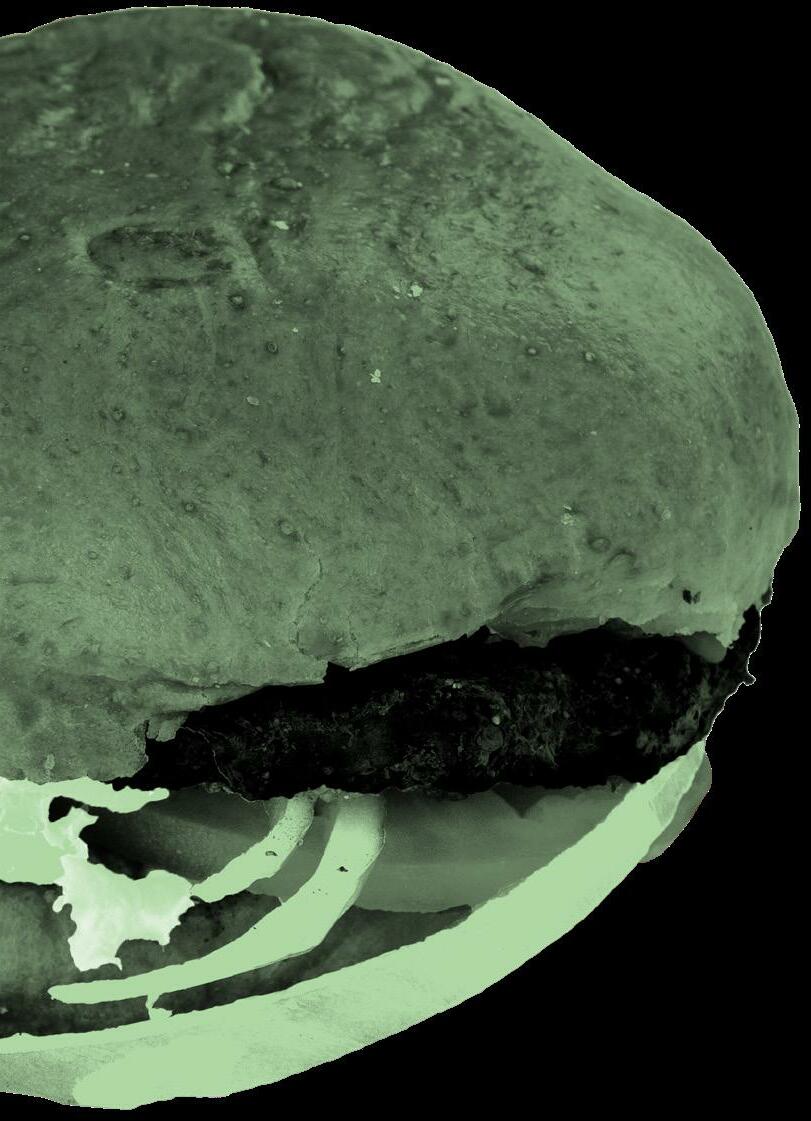

To divert organic waste from land fills and curb greenhouse gas emis sions, California passed Senate Bill 1383. This bill requires jurisdictions and cities to send its organic waste to composting facilities at the beginning of 2022, according to LACSD.
“I think that is significant to high light the fact that this is being done to mitigate climate change," said Chris Doran, professor of Religion and
Food waste goes to facility or compost bin
Sustainability and founder of the Sus tainability major and minor.
The goal of this bill is to reduce organic waste disposal by 75%, com pared to the 2014 baseline, by 2025, according to the L.A. County Depart ment of Public Works. CalRecycle regulations set for organic waste re duction went into effect Jan. 1.
It is unclear which company will haul the University's organic waste because the LACDPW did not re spond for comment.*
Doran said the bill’s implementa tion could provide a bridge between educational and operational oppor tunities within Pepperdine.
Pepperdine’s food waste compli ance plan and food waste education plans are unclear because Ricky El dridge, the director for the Center for Sustainability, declined an in-person interview. Chief Operating Officer Phil Phillips, Bon Appétit — Pepper dine's new dining service — and El dridge did not comment on Graphic requests for food waste data.*
*The Graphic reaches out to every source multiple times to request an interview. In some cases, these sources may decline to comment. The Graphic conducts real-time interviews for in-depth stories and only uses email responses for data or when a source cannot participate in a real-time interview.
FOOD 25
Food waste goes to land ll
Land ll traps food, creating methane
Food is grown or produced, distributed and sold
Consumer eats food
Nutrients return to the soil
The EPA compiled guidelines to aid in food loss prevention for uni versities. It is unclear what guidelines Waves Café follows, as Bon Appétit declined to respond to the Graphic's request for this information.*
There are ways Pepperdine can commit to creating an on-campus closed-loop system, like installing more community gardens, expand ing the existing garden, applying or ganic waste to soil on hillsides and creating more educational opportu nities for students, Doran said.
“We’re just not teaching peo ple about food waste,” Doran said. “We’re not teaching them about how that impacts climate, as a methane emitter [and] food waste that’s not composted. I think all those things are incredibly missed opportunities that would make us better citizens, and other colleges around in L.A. County are doing that, we just aren’t.”
Finley, whose project involves the rehabilitation of Pepperdine’s com munity garden, said she wants stu dents to use the community garden as an educational tool to learn where food comes from and the impact the current food system has on the plan et.
“When you are empowered to know how to produce those things, you don’t have to rely as much on the corrupt systems that are providing them for you now,” Finley said.
The community garden is not only for Sustainability students, Finley said, as gardening can be any indi vidual's step into the right direction toward caring more for the environ ment.
Finley said people from the United
States may have the perception that gardening skills are “lesser-than” be cause people should be doing “high er-level things” as a developed coun try.
“It’s created this insane discon nect from our planet and physical personhood,” Finley said. “I think having that education can be ex tremely grounding in recognizing our connectedness to the Earth and our fundamental dependence on it. I think that’s something that, regard less of how developed you are as a country or community or whatever, you need to be able to maintain that connection.”
Topanga nonprofit Full Circle Compost seeks to educate people across the Santa Monica Mountains to return to their earthly connections through a free composting system, said Cecilie Stuart, Full Circle Com post founder and executive director.
“We really started with Full Cir cle Compost as a climate solution that we were advocating and help ing people with a practical solution,” Stuart said.
Stuart said her team developed a curriculum and infrastructure for gardening and composting in ele mentary schools across the Santa Monica Mountains.
Full Circle Compost also offers adult climate education classes and provides free composting access for Topanga residents via drop-off sites. Between residential and school bins, Stuart estimates that her team has composted 50,000 pounds of organic waste.
“What we felt was that people really wanted to do it, but they had
failed or the system didn’t work,” Stuart said.
Because humans are the only ani mal that generates waste, Stuart said people need to learn how to take ac countability for their waste and man age it in a responsible manner.
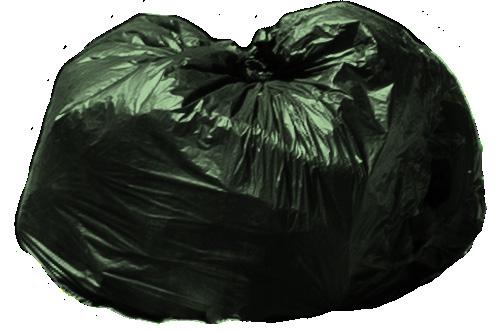

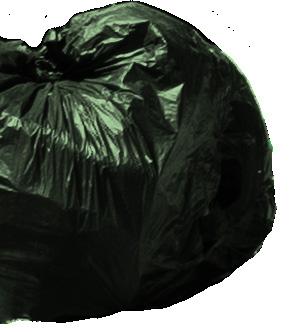
“You see your food going in, you see the volunteerism and the com munity spirit that arises from com posting, from really working with the microbiology,” Stuart said. “And then you see the result. You see the soil, and you use it on site. That's a real closed-loop system.”
The Ethics of Food
There are many ethical concerns people should consider when con templating their relationship with food, Doran said.
Doran said a great deal of resourc es go into producing food, which is why people should be mindful of their food waste.
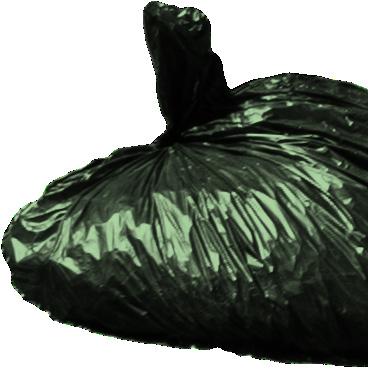
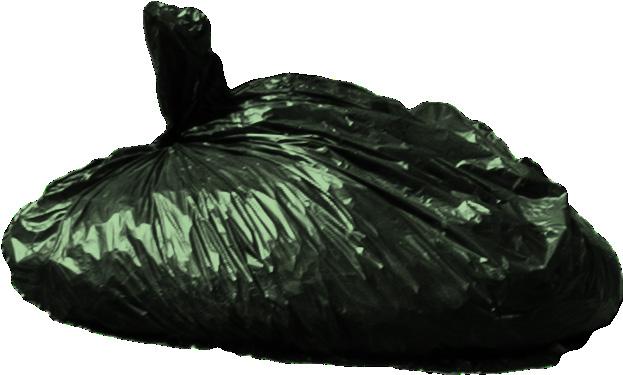

“If we’re being very food wasteful, [...] then it seems to me that we’re being incredibly dishonorable to the land, to water, to resources, to animals, to not honor the farm work that’s being done,” Doran said.
Finley said it is important to un derstand the labor and difficulty food production workers endure be cause it “gives a sense of solidarity” for those who face unfair work envi ronments and exploitation.
People may be geographically so far away from their food they may not realize what went into the pro duction of their food, Doran said.
“The larger that geographical distance is, is likely the larger that
26 CLIMATE CHANGE
Bon Appétit’s Food Ethics
2002 Seafood must meet USDA Seafood Watch guidelines.
2003 Milk and yogurt do not have artificial hormones (rBGH or rBST). Chickens are not given routine, non-therapeutic antibiotics.
2005 All eggs are Certified Humane cage-free. Laying hen facilities must have room for hens to rest, bathe, perch and scratch.
2007 Cows designated to become ground beef do not consume antibiotics, added growth hormones or feed containing animal byproducts and are certified by Humane Farm Animal Care.
2012 All foie gras and crate-raised veal are banned.
2016– Pigs are not given antibiotics or ractopamine, a growth promoter. The pork producers
house pregnant sows in groups instead of individual crates.
moral distance is that we’re not thinking about,” Doran said.
After bridging the geographical and moral distances of their food, Doran said people must then con sider the impact food sourcing has on the planet. This distance can be measured in “climate miles,” or how much gasses are emitted to bring the food from other locations to Malibu.
Finley said local farmers markets are a more ethical way to purchase food, and she said it is “important to do inconvenient things” if it means benefitting the planet.
“There are so many people who are exploited because of how we get our food, and so I should be willing to go the extra mile,” Finley said.
Bon Appétit launched its Farm to Fork program in 1999, which re quires its cafés to purchase 20% of its ingredients from small farms within 150 miles of the kitchen it is serving, according to Bon Appétit’s website.
Bon Appétit declined to comment
on information requests about the specific farms Pepperdine’s cafete rias source from. Its website states every café has a board listing its sup pliers in the Farm to Fork program, but there is no visible board in Waves Café.*
Other Ways to Avoid Food Waste

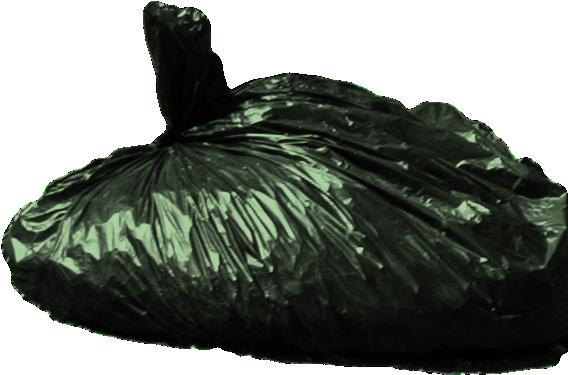






Composting is not the only meth od of food waste diversion.
SB 1383 also requires jurisdictions across California to “redirect” 20% of consumable food to people who are in need, rather than throw it away, according to LACSD.
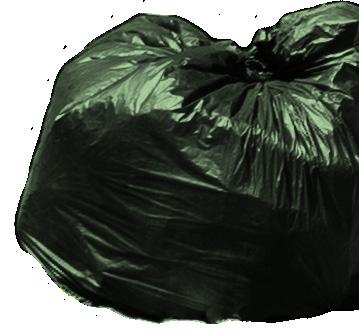
The EPA’s Food Recovery Hierar chy describes and ranks six strate gies for institutions to reduce their food waste, organized based on its societal, economical and environ mental benefits.
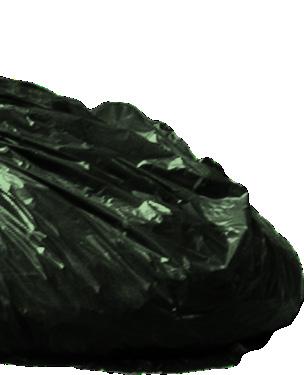
The Bon Appétit's website states it follows the EPA’s food recovery hierarchy.
scraps to
donate
FOOD 27
2019
1. SOURCE REDUCTION reduce food created initially 2. FEED HUNGRY PEOPLE redistribute nutritious, edible food to people in need 3. FEED ANIMALS
food
animals 4. INDUSTRIAL USES convert food waste into biofuel and bioproducts 5. COMPOSTING recycle organic waste and nutrients back into the soil 6. LANDFILL the final option
Photos by Lucian Himes
PERFECT
SOLUTION’
Malibu fights coastal erosion

‘NO
28
PERFECT
SOLUTION’
by Samantha Torre & Abby Wilt
Westward Beach is caught between a rock and a hard place — or, the ocean and the stone cliffs rising be hind it.
This is the dance of coastal ero sion, and Westward Beach is just one beach of many facing land-damage issues.
Coastal erosion is when sea levels rise and strong wave action or coastal flooding clears away rocks and soil — causing the coast to erode, according to U.S. Climate Resilience Toolkit.
As the global temperature increas es due to climate change, ice caps in the Earth’s polar regions melt, caus ing ocean levels to rise, according to Britannica. Additionally, a warmer Earth means stronger storms, com pounding the existing problem.
In the United States alone, coast al erosion has caused approximately $500 million per year in property loss on coasts across the country, accord ing to the Office of Coastal Manage ment. In addition, the federal gov ernment spends approximately $150 million every year on coastal erosion prevention measures.

“It’s tough,” said Karen Lynn Mar tin, distinguished professor emeritus of Biology. “It's the kind of question
that every community is facing right now — how do you keep the things that you love, as long as possible and as sustainably as possible?”
As the rate of coastal erosion in creases, scientists and policymak ers are discussing how to save the beach, Martin said. One option is supplementing the beach with rocks, and the other is expanding Westward Beach Road, which will take away part of the usual beach, but may pre serve the rest.
Martin said whatever solution people decide, there needs to be compromise; there is “no perfect solution” when it comes to main taining both public access and the beach visitors love.
29
How Coastal Erosion Affects Malibu
In Malibu, beach erosion is prev alent and a concerning problem for homeowners and business owners along the coast, Mayor Paul Grisanti said. Grisanti is also a member of the board of Smart Coast California, an organization advocating for collabo rative stewardship of the coast.
Rising sea levels wear away the coast, and factors such as the lack of dams, lack of flood basins and run off from storms cause beach erosion, Grisanti said.
“That's one of the many reasons that Broad Beach is not as broad as it was when I first came to Malibu 44 years ago,” Grisanti said.
Grisanti said the most obvious points of coastal erosion in Malibu are by the Getty Villa, the northern end of Malibu and by Palisades Beach Road.
Martin said there are two things happening along the coast: the sea level is rising, and storms are escalat ing in both strength and frequency. These factors increase erosion and speed up the loss of beach habitat, especially on sandy beaches, where sediment is loose.
The change in beach size happens seasonally, Martin said, but these events make the decline much more dramatic.
While rocky areas may not wash away like a sandy beach, rising sea levels can cover them with water, Martin said.
“Those animals and plants that need to be in the air or those that are adapted to be in both water and air may find themselves inundated more than they would prefer to be for their survival,” Martin said.
Coastal Erosion in Another Time
When Grisanti was in college, the scientists studying coastal erosion stated the beach was eroding at ap proximately one foot a year in Santa
Barbara. Grisanti said the beaches in Malibu are lucky to have different ge ology — geology that causes them to erode little by little.
“About three years ago, it [coastal erosion] was supposed to turn sharp ly upward,” Grisanti said. “In reality what's happened is it's stayed on a lit tle bit, little bit, little bit range, which is — it's a long term thing.”
For example, geologist Polly Bickel found in a 1999 study that 14,000 years ago, Malibu Bluffs Park — across from Pepperdine — was underwater.
“I don’t know because I wasn’t here at that time,” Grisanti said. “I know it because geologists did some work there and they found evidence that it was underwater, and so the sea level rise goes up and goes down.”
Grisanti said there are parts of the coast where land is rising faster than the sea level, preventing coastal ero sion rise, like in Northern California, showing that beaches are not a static system.
A variety of factors contribute to land rise, according to NASA's Earth
Observatory. For example, in the Liv ermore Valley, it is likely that an un derground aquifer refilling is causing uplift. In Northern California, the tec tonic plate subduction at the Men docino Triple Junction provides more coastal uplift than what occurs in cen tral and southern California — sever al millimeters per year.
Why Save the Coast?

Martin said there are a multitude of coastal habitats: sandy beaches like Ralphs Beach; gravel beaches like those in Washington or Northern Cal ifornia; and cobble beaches, made of rocks smaller than boulders, which often lie below sandy beaches.
Muddier areas, such as estuaries like Malibu Lagoon, are habitats nec essary for invertebrates and birds, Martin said.
Some scientists have considered the rocky tide pools to be one of the most endangered habitats because of its specific and small area, Martin said. Many of the animals and plants
30 CLIMATE CHANGE
that make tide pools their home rely on the changes that come with a low tide.
“It's going to change who can live in those spots,” Martin said. “They're gonna have to move up the shore, or there may not be pools further up the shore that they would be able to move to.”
Even in sandy beaches, the ani mals such as the sand crab will con tinue to get moved up with the tide, Martin said. Animals such as the grunion, who come to the beach to lay their eggs, will lose that area for reproduction.
“At some point, the beach band will completely disappear and so even those that can move won't have any place to go,” Martin said.
Many of the animals — shorebirds, sea turtles and mussels — that use the beach for reproductive purposes are endangered, Martin said.
Coastal erosion isn’t the only prob lem affecting marine life. Eggs rely on a certain temperature range to devel op, and if it gets too hot due to global warming, it can prove fatal.
“We've measured temperatures in the sand that are already too hot for the eggs to survive,” Martin said. “That doesn't happen all the time. But you know if it happens at the wrong time, or at a time when there's a lot of eggs out there, it could be really, real ly tragic.”
For sea turtles, temperatures de termine the sex of the egg, Martin said. As temperatures rise, the differ ence between females and males in creases, with fewer males.
Additionally, mating seasons for marine and shore animals are not only related to time of year, but the tides themselves, Martin said.
“To be able to take advantage of that earlier season, it would be a very big change, not just a little change of a day or two, [it] would be like weeks and months and different times of day, and it would be a very difficult
change,” Martin said.
For animals such as the sea turtle and grunion, the beach is the only place they can reproduce, Martin said.
“It's also a really important hab itat, and the animals and plants that use it don't have any other place to go,” Martin said.
The beach is important to hu mans too, Martin said. During the COVID-19 pandemic, when most indoor gathering areas were closed, people sought refuge at the beach.
“They were one of the most sol id restoring places people could go during a very difficult time to just sort of enjoy nature and be in a peaceful place,” Martin said. “It's very spiritual as well as a very soothing kind of en vironment that is inspirational to a lot of people and just great for your men tal health.”
'Hard Solutions'
Grisanti said Smart Coast Califor nia advocates for every county to file for a coastal plan.
Some solutions, such as sea walls, are known as "hard solutions" be cause they battle nature, Martin said.
The California Coastal Commis sion has certain initiatives they want residents to embrace in the Coastal Act — a plan to protect environmen tally sensitive areas, maintain public beach access, limit urban sprawl and consider environmental justice or the equitable distribution of resources, according to the commission's over view of the Coastal Act.
Environmentally sensitive areas include intertidal waters, wetlands, estuaries and habitats with endan gered plants or animals, according to the coastal act. The commission also seeks to mitigate the risks to life or property in high geologic-risk areas.
"The Coastal Act defines an 'Envi ronmentally Sensitive Area' as: Any area in which plant or animal life or
their habitats are either rare or espe cially valuable because of their spe cial nature or role in an ecosystem and which could be easily disturbed or degraded by human activities and developments," wrote the Commis sion in their outline of the Coastal Act.
The commission will review coast al development to make sure it is not harming coastal resources — for the safety of both the environment and the people moving in, according to the Coastal Act.
"[The plan will] Require that new development neither create nor con tribute significantly to erosion, geo logic instability or destruction of the site or surrounding area, or require the construction of protective devices that would substantially alter natu ral landforms along bluffs and cliffs," wrote the Commission.
Smart Coast California helps res idents and business owners make a plan while still following all of the guidelines they need to.
“What we've done is try to promote communication about what Coastal wants, how valid their science is and get people to think about whether or not that's what we want to do,” Gri santi said.
Coastal retreat — the process of moving homes or buildings a few feet up the coast to account for rising sea levels — is another solution, Grisanti said.
“That is actually a solution that makes sense,” Grisanti said. “They [CCC] also are trying to design the roads for that.”
Grisanti said while coastal retreat would be easy for homeowners on the northern coast of California, where they can just move up a few feet, it would not be likely for buildings such as ports or homes that do not have room to move.
“They've got some real problems because the port of L.A. and the oth er ports are all designed for about the sea level we have now,” Grisanti said.
COASTAL EROSION 31
Martin said sand replenishment, or beach nourishment, is a temporary solution because it needs to be done within a decade at most.
“One of the other problems we have here in Malibu is the problem of where do you get the sand, where's it coming from?” Martin said. “Because it's just not that easy to get. It's not that easy to bring the shore here.”
Most of the beaches in Southern California have lost their dunes — large hills of sand that naturally re plenish the beach as it washes away — Martin said.
Another solution, Martin said, is to view the beach as a geological feature that is allowed to retreat up the coast. In state parks, such as Leo Carril lo, there are only campgrounds, and some stretches of the Pacific Coast Highway behind them. The beaches in these areas are allowed to move in land.
Beaches with houses right behind them are not as lucky, Martin said.
“What's going to happen is — and what's already happening is — those beaches are going to be lost, they're going to be gone,” Martin said. “There's no place for them to go and they'll get inundated.”
Sea walls, Martin said, protect what is behind them, at the cost of what is in front.
“You can see these very old civili zations who have put up sea walls to protect their structures, and there's literally no beach in front of that,” Martin said. “There's a nice prome nade to walk along and enjoy the sea air but there's no actual beach at that place anymore."
'Soft Solutions'
Adding dunes and allowing kelp on the beach are “soft” or “green solu tions," Martin said.

“This is more of a nature-based solution that tries to work with na ture, accepting the reality that nature is much stronger than any of us and trying to work with it rather than try ing to fight it constantly,” Martin said.
Kelp is a natural organism that grows in the subtidal zone — the area below tide that is constantly covered in water except in extreme cases, Mar tin said. It is one of the fastest growing plants in the world. When storms or old age pull the kelp free, it washes onto the shore and provides not only nutrients to the beach but acts as a shield against erosion.
“Even if a bigger wave would come
along, not as much erosion would occur because that kelp right there is holding it to some extent, kind of like a net up on the cliffs when they're try ing to stop the erosion,” Martin said.
While beaches such as Zuma Beach are cleaned, or groomed, of kelp for aesthetic purposes, Martin said leaving the kelp in the intertidal zone — the area between high and low tide, covered in various amounts of water — will help to leave the sand on shore.
“We're better off if we have more kelp, not less,” Grisanti said.
L.A. County only grooms the up per part of their beaches and leaves the intertidal zone alone, Martin said. Some state parks do not groom their beaches at all.
In Malibu, Santa Monica and Manhattan Beach, there are projects focusing on restoring dune habitats, Martin said. These dunes will also help protect homes and roads from waves.
“Those are going to allow more of a native vegetation to come back and they'll provide habitat for a lot of oth er critters,” Martin said. “Also, it is a way of storing more sand, allowing a little bit better replenishment nat urally, rather than bringing in a big truck load of sand.”
32 CLIMATE CHANGE
“There's really nowhere to move the port.”
ECO-NEWS
Newsrooms can integrate sustainability in coverage and operations

Coverage Operations
• Fact check environmental claims in ads
• Monitor press contribution to public debate on environmental issues
• Train staff about advertising and press in environmental issues
• Expand climate coverage
• Focus on impacts on society: food, agriculture, climate migration, housing, urban planning, disaster response, economy and culture
• Include all aspects of news: written works, visuals, data and graphics
• Intersectionality of reporting
• Consider climate in other fields of reporting
• Examine local data on climate change, not just global
•
Increased digitization decreases environmental impact
• Cease the use of plastic packaging
• Reduce footprint of a newspaper's lifecycle by:
• Considering which forests the paper comes from
• Purchasing paper as close to printer as possible
• Reducing ink, water and electricity consumption in printing plants
• Electrifying distribution vehicles
• Having waste treatment centers collect unsold copies
• Look into the internal workings of the organization to implement sustainability changes
• Minimize print and optimize distribution
Sources: AP.org, World Association of News Publishers (wan-ifra.org)
PGM does not have a sustainability policy, but the organization has done the following to improve sustainability: decreased number and volume of print editions and has no plastic cutlery in newsroom (all recyclable or compostable).
COASTAL EROSION 33
the mental
 Photos by Lucian Himes | Photo illustration by Ali Levens | Model Haley Hoidal
Photos by Lucian Himes | Photo illustration by Ali Levens | Model Haley Hoidal

THE THE ICEBERG
34
THE TIP OF THE SINKING ICEBERG climate crisis impacts mental health among youth
by Liza Esquibias
said Lauren Traitz, an associate mar riage and family therapist from Ange les Psychology Group who considers herself to be "climate aware."
heavily on major life decisions other generations did not have to deal with.
The climate crisis mani fests itself in the form of droughts, fires, floods and other natural disasters — a tornado of destruction that leads to other forms of environmental ca tastrophes.
Yet, mental health is not usual ly correlated with the climate crisis,
As the climate crisis intensifies, Traitz said a sense of impending “doom” and anxiety — particularly among Gen Z and millennials — is worsening. In a time when many young people are trying to plan for their futures, Elsa Weinfeld, senior Psychology major and Sustainability minor, said climate change weighs

“It’s like carrying other people’s burdens,” Weinfeld said. “It’s definite ly not an easy thing to do, and it’s just part of the nature of being [passion ate about] sustainability; it’s carrying these burdens that other people want to push aside.”
With an unpredictable future looming, students said they often re flect on how the Earth reached the state it is in today.
35
The Impact of the Past on the Future
As a millennial and therapist who works with college-aged students, Traitz said she understands the frus tration of people who have their en tire lives ahead of them but feel as though they lack freedom in their decision-making.
“There’s this feeling of certain choices being really deprived with out the future being certain,” Traitz said.
PGM alumna Ivy Moore (’21) studied Journalism at Pepperdine, but she said she also chose to take Sustainability classes. She said these classes and professors provided her with an awareness about the climate crisis she would not have had other wise, and that impacted the trajecto ry of her future.
Moore said since taking Sustain ability courses, she has made a con scious effort to live an eco-friendly lifestyle — from the companies she works at to choices she makes in her personal life. As she begins to deter mine where to place her roots, Moore said the effects of climate change play a pivotal role in her thought process.
“I can’t imagine owning property [in California],” Moore said. “I don't know what the state of California is going to look like in 10 or 20 years.”
With a remote job, Moore said she has the freedom to move any where physically, but climate change stripped her of the emotional free dom to be happy in a time she said should be exciting to someone her age.
Moore said the West Coast expe riences mudslides and droughts, but the South has flooding and the Mid west is going through tornadoes, so to her, there is no real “safe” space.
“Every place has its own set of problems, so now for me, it is picking out the lesser of all evils and what is least scary to me,” Moore said.
EXPOSURE TO CLIMATE CHANGE CAN BE: DIRECT: INDIRECT:
The impact of acute climate disasters
FOR EXAMPLE: PTSD after a flood, wildfire or superstorm
Secondary effects of longterm climate events
FOR EXAMPLE: sea level rise, migration or displacement
Researchers found connections between:
Higher temperatures
Extreme weather and acute disaster
Environmental pollution effects
suicide rates, worsened sleep quality and increased conflict and violence
Increases in PTSD, depression, anxiety, substance use and suicidal risk
Worsening of mental disorders with increased depression, anxiety and psychosis
At times, Moore said she feels hopeless because it can feel like there is nowhere for her to go and feel relaxed. She said the instabili ty climate change causes makes her feel unstable in other aspects of her life, too.
“I am in my 20s, and people are starting to think about, ‘Am I saving for a home or just saving to make moves throughout my life?’” Moore said.
Junior Political Science ma jor Ethan Barragán said he shares Moore’s worries about settling his family in California. It is not about what he wants for his future any more, but what he needs to do to preserve his future family’s lives.
"I wanted to live where I grew up and call home," Barragán said. "How ever, that can change just due to just weather and knowing that we're in a drought. So yeah, there's a whole lot of environmental issues that make me not want to plant my root firmly in Los Angeles especially.”
Moore said it is hard for her to grapple with her resentment toward
the generations who did not have to worry about climate change while si multaneously making it worse.
“Sometimes I get really frustrated when I realize so many issues that we're dealing with are not even our fault,” Moore said. “We have to be like, ‘OK, we have to survive and fig ure it out.’”
Barragán said he does not see tackling climate change as a choice for Gen Z. He said while past gener ations left Gen Z in crisis, it would not be fair for Gen Z to leave the fu ture generations with the same, or an even worse, problem.
“It's a lot of weight to have on your shoulders,” Barragán said. “But I be lieve someone in our generation has to pick up the slack or it's basically kicking the can down the line. And I don't want this to fall along the lines of future generations because at that point it’ll be even more too late.”
Even though climate change im pacts his generation greatly, that does not mean it did not impact past generations too, Barragán said.
Growing up in Los Angeles, he said
36 CLIMATE CHANGE
x
Increased
x
x
Source: climatepsychiatry.org
his entire family developed asthma from the pollution in the air, and said he now understands that will be hard to escape if he wants to live in any big city.
“Asthma has always been some thing prevalent in my parents and grandparents lives,” Barragán said. “I know that, after doing some re search, that that's something that is just by living in a large metropolitan area that has really bad air quality.”
Because of his asthma, Barragán said he feels he has to worry more about his health in the face of the cli mate crisis than others.
“I definitely want to be able to live in a place where I do have fresh air and clean water,” Barragán said. “I want to be able to start a family, to continue to live my life more pros perously and not have to deal with a lot of those things that not everyone deals with in life.”
Along with frustration, fear and pressure, young people also have to deal with loss — loss of control, loss of a sense of peace in nature and loss of a relationship with the environ ment.
Traitz said these factors cause anxiety. People often do not realize climate change disrupts the human urge to connect with the Earth, which is where the sense of both conscious and subconscious loss stems from.
“We often have developed — even if people aren’t conscious of it — some kind of relationship or sense of belonging to some natural environ ment,” Traitz said.
Weinfeld said her lack of control over climate change sparks anxiety. When she started to think about hav ing children someday, Weinfeld said those fears escalated even more.
“That’s probably the main reason I went into Sustainability,” Weinfeld said. “I want to feel like I have even the slightest bit of control over the future, and be able to educate myself on what I can do to make sure my
kids can live on an Earth that’s able to sustain itself.”
Weinfeld said she has always wanted to be a mom, and as she gets closer to the age where she would want to have children, her mind rac es with a mix of guilt for potentially contributing to the climate crisis and for the type of world she would bring children into.
“That’s a really scary thought for me, is that the planet is going to look completely different for my kids,” Weinfeld said. “Is it going to be safe? What kind of challenges are they go ing to have to deal with? That’s some thing that’s on my heart.”
Being an Advocate
Climate advocacy is when people work to find solutions to the climate crisis and educate those who do not understand the impact of climate change on the world, according to Aspen Institute.
Weinfeld said immersing her self in the climate crisis in school or work overflows into her personal life, as constantly thinking about the hu man impact on the planet brings a great sense of responsibility onto her shoulders.
“I think being in the Sustainabili ty program is inherently overwhelm ing,” Weinfeld said. “You are going into class every day, learning about pretty much how people don’t real ly care about the direction Earth and climate is going. It is a very helpless feeling, and climate anxiety is defi nitely a real thing.”
After taking Sustainability class es and working at an environmental consulting company, Moore said she can relate to the isolating feeling of being an advocate against climate change.
“[We] see this doom and no one else sees it, and that’s a lot — it’s overwhelming,” Moore said.
Barragán said he interned at
Change the Chamber during the spring 2022 academic semester. Change the Chamber is a group of youths who monitor the United States Chamber of Commerce’s ac tions and advocate for businesses and corporations to be more active in fighting the climate crisis, Bar ragán said.
In this program, Barragán said he was able to expand knowledge and act on what he learned about in his Political Science classes in a re al-world setting. He said one of his most memorable days was when he protested in front of the Supreme Court during the EPA v. West Virginia court case.
“I had a really cool and unique experience,” Barragán said. “I re ally was able to get into the thick of things in terms of climate, and I feel like as an individual I wanted to, and I still try to do my part and live what I preach.”
Barragán said one way to contrib ute to major change falls above all others.
“You have to vote,” Barragán said. “I think voting is a key to the way in which we can get our point across. I know that there are young er candidates and candidates that are focusing on climate-related is sues — whether it be Republican or Democratic representatives — so just participating in our democratic process.”
Personal Impact of Climate Anxiety
Since committing to climate ad vocacy, Weinfeld said she has felt such an overwhelming responsibil ity to prevent detrimental outcomes that it led to unhealthy consequenc es for her own wellbeing. For ex ample, she said her interest in food sustainability led to an “enormous” sense of pressure around the ethi cality of what she eats and where she buys her food.
CLIMATE ANXIETY 37
“I lost weight because I was hav ing so much anxiety about whether or not the foods I was eating were sustainable or ethically sourced,” Weinfeld said. “That’s definitely a big example of how I internalized these things — I was taking my classes and taking them home with me. Then, there was a tremendous amount of guilt.”
Moore said she had a similar ex perience to Weinfeld when shopping for clothes. As she did more research, however, she said she realized those in power must take responsibility for producing unsustainable products, as well.
“Take fast fashion, for example,” Moore said. “There’s this whole nar rative that it’s the consumers’ fault and we need to choose what we buy more ethically — which I think is true. At the same time, I feel like the big corporations that are producing these products are the fashion com panies. It’s on them to change the way that they’re producing things more than it is on us.”
In the end, Moore said there are many little things everyone can do that will make a difference, but the key is that everyone actually has to follow through. She said her future will always be dampened by the cli mate crisis, but that does not mean anyone should give up on doing what they can.
ONLINE RESOURCES
“I don’t think you can escape this,” Moore said. “It’s just sad that our gen eration has to make choices based on climate change.”
Barragán said it can be discourag ing to put so much effort into a cause without seeing an immediate posi tive outcome.
“It's really hard when you realize that your small actions maybe ar en't making that big impact that you might think they are,” Barragán said.
The key to finding the motivation within himself to continue taking ac tion is to change the way he thinks about his impact, Barragán said. It is about doing what he hopes those who come after him will do too, he said.
“It's switching our mindset,” Bar ragán said. “I really just want to be able to instill that in my life, in the people's lives around me and my kids’, my grandkids’. So I definitely feel it’s on us — it’s on our generation.”
Finding Peace in Uncertainty
Barragán said having a plan for how he will do his part in the future to prevent climate change brings him peace.
“It's become a goal of mine to work for a nonprofit or a business that is pro-climate change legislation, and similarly, just living my life in accor dance,” Barragán said.
Moore said she found a balance of being aware of her impact on the climate crisis and letting it take over her life.
“We can’t be perfect,” Moore said. “Something that I advocate for is just to do the best with what you have in the moment.”
Traitz said the key to avoiding climate anxiety is to find balance in consumption of the news about it. Traitz also said reminding oneself of their love for the planet to disassoci ate feelings of anxiety with the Earth is important. Some ways to do this in clude hiking and gardening, and pay ing attention to the details of nature like the colors and smells of plants and trees.
“Find other ways to channel the energy,” Traitz said. “Find a connec tion to the world that isn’t just about it being this doomed thing where we’re only relating to the world as a set of statistics."
It is good for humans to have the tendency to fight danger, such as cli mate change, Traitz said. At the same time, though, she said not to let the stress of the fight make people forget their intentions.
“If we’re just all fight-and-re sponse and we’re in that mode, we’re not as open to taking in the sense of connection that I think we need to sustain an act,” Traitz said. “We have to love it [the Earth] to fight for it.”
BOOKS
All We Can Save Project x Gen Dread • Climate Therapy Alliance (Pacific Northwest Chapter) • The Australian Climate and Health Alliance
SOLACE AND SUPPORT "All The Feelings Under the Sun: How to Deal with Climate Change" by Leslie Davenport • Climate Psychology Alliance UK • "How to Change Everything: The Young Human's Guide to Protecting the Planet and Each Other" by Naomi Klein with Rebecca Stettoff
"A Field Guide to Climate Anxiety: How to Keep Your Cool on a Warming Planet" by Sarah Jaquette Ray • "Active Hope: How to Face the Mess We’re in Without Going Crazy" by Joanna Macy • "Emotional Inflammation: Discover Your Triggers and Reclaim Your Equilibrium During Anxious Times" by Dr. Lise Van Susteren, M.D. and Stacey Colino • "I Work in the Environmental Movement. I Don’t Care If You Recycle.," published in Vox 2019, by Mary Annaise Heglar
38 CLIMATE CHANGE
Sources courtesy of Lauren Traitz
VISIT








FOLLOW

CLIMATE ANXIETY 39
AND
@MALIBUPARKATCROSSCREEK 23401 CIVIC CENTER WAY, MALIBU, CA TWO MINUTES FROM CAMPUS! NAIL SPA AT THE PARK










 Collage by Ali Levens
Collage by Ali Levens












































 Photos by Lucian Himes | Photo illustration by Ali Levens | Model Haley Hoidal
Photos by Lucian Himes | Photo illustration by Ali Levens | Model Haley Hoidal










